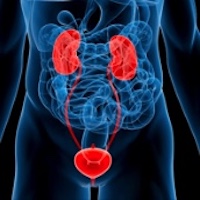Protective effect of chlorogenic acid on renal ischemia/reperfusion injury in rats

All claims expressed in this article are solely those of the authors and do not necessarily represent those of their affiliated organizations, or those of the publisher, the editors and the reviewers. Any product that may be evaluated in this article or claim that may be made by its manufacturer is not guaranteed or endorsed by the publisher.
Objectives: Ischemia/reperfusion (I/R) injury is a common cause of renal injury and to date, many pharmacological agents have been identified to decrease I/R injury. One of the potential compound that can target I/R injury is chlorogenic acid (CGA). It has potent antiinflammatory, antibacterial, anti-oxidant, analgesic and antipyretic activities in in vitro experiments and in vivo animal models. The aim of the study was to investigate the protective characteristic of CGA on renal I/R injury.
Material and Methods: 24 rats were randomly allocated to three groups (n = 8): Sham, I/R+CGA and I/R groups. CGA was administered intraperitoneally at a dose of 20 mg/kg, 10 min before reperfusion. I/R injury was achieved by clamping the left renal artery for 45 minutes, followed by reperfusion for 4 hours. The left kidneys of the rats were examined for tissue damage by histopathological and biochemical examination. For histological evaluation, EGTI scoring system was used. For biochemical examination total oxidant status, total antioxidant status and oxidative stress index were used. The power analysis indicated that 8 subjects per group would be required to produce 80% chance of achieving statistical significance at p < 0.05 level. The results are expressed as mean ± SD. Mann- Whitney U was performed for statistical analysis.
Results: Histopathological examination of the tissue damage revealed that all kidneys in the sham group were normal. I-R group had significantly higher histopathological scores than other groups. Histopathological improvement was seen after CGA treatment. TAS, TOS and OSI values of I-R group were significantly higher than sham group (0.88 vs 0.76 (p: 0.004), 13.8 vs 7.04 (p: 0.021) and 0.15 vs 0.09 (p: 0.034), respectively). In CGA treated group TAS, TOS and OSI levels were 0.84, 6.47 and 0.07, respectively. CGA treatment resulted in significant improvement in TOS and OSI parameters.
Conclusions: CGA treatment provided marked improvement in renal histology and suppressed oxidative stress. Thus, CGA may have a protective effect in renal tissue against I/R injury.
PAGEPress has chosen to apply the Creative Commons Attribution NonCommercial 4.0 International License (CC BY-NC 4.0) to all manuscripts to be published.


 https://doi.org/10.4081/aiua.2020.2.153
https://doi.org/10.4081/aiua.2020.2.153



